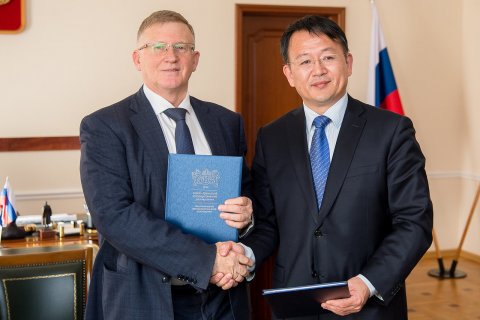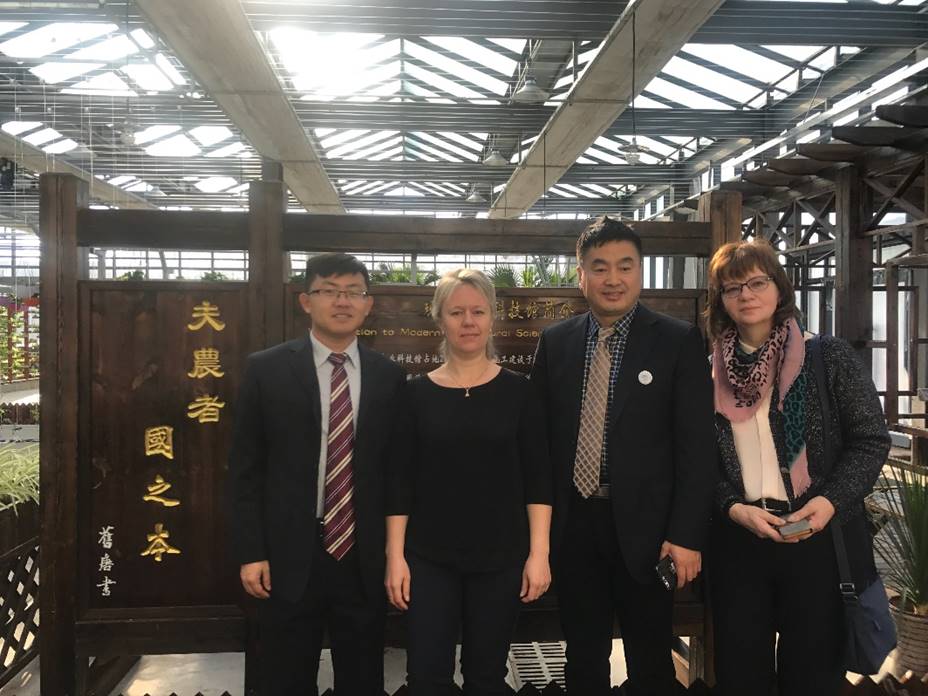中俄食品生物技术国际联合实验室
China-Russia Joint International Research Laboratory on Food Biotechnology
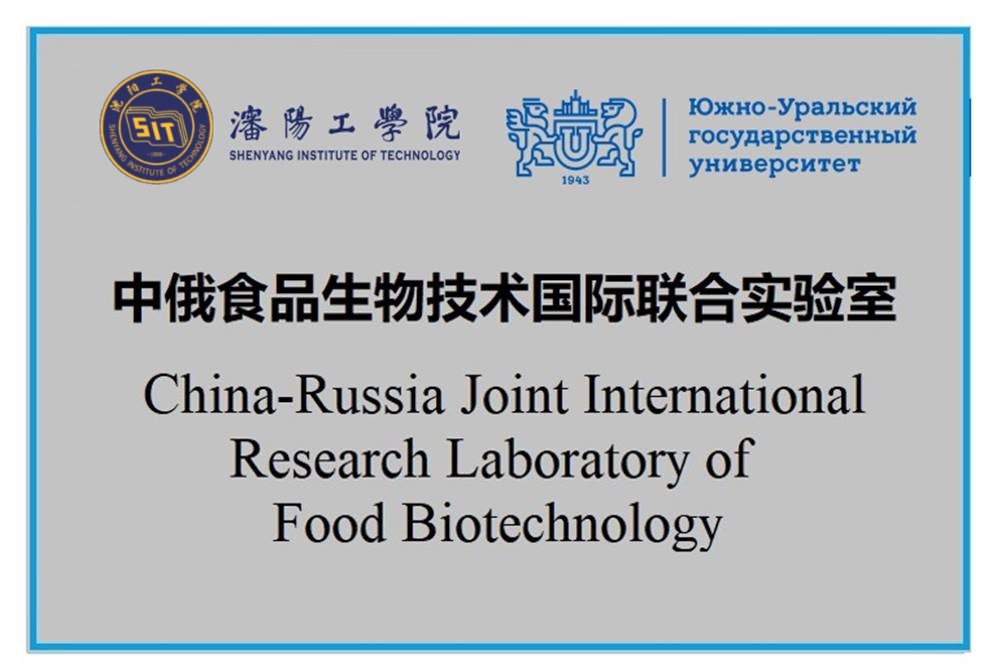
一、总体概况
中俄食品生物技术国际联合实验室的建立,旨在发挥双方各自的资源优势和技术优势,充分利用俄罗斯丰富的动植物自然资源以及食品的零污染、纯天然、非转基因、营养丰富等特点,结合中国食品的地域优势、民族特色等开展合作研究。并以中俄联合实验室为契机,进一步将对双方高校的人员互访、合作科研、联合办学和开展各种学术交流发挥桥梁式的作用。
沈阳工学院和南乌拉尔国立大学于俄罗斯车里雅宾斯克签署共建实验室协议,建立“中俄食品生物技术国际合作联合实验室”。联合实验室设立两个研发场地,分别位于我校生命工程学院和俄罗斯南乌拉尔国立大学食品与生物医药学院。双方均设置实验室主任。
中方主任:王家庆(生命工程学院 院长 教授)
俄方主任:Irina Potoroko(食品生物技术系 主任 教授)
二、俄罗斯南乌拉尔国立大学食品生物研究简介
俄罗斯南乌拉尔国立大学2010年被评定为“国家研究型大学”,2015年入选俄罗斯联邦5/100卓越大学计划。南乌拉尔国立大学是俄罗斯联邦教育科学部评定的俄罗斯最受欢迎的十所高校之一。综合实力排名位居俄罗斯高校中前十。
近年来中俄农产品贸易快速发展。在农业领域,中俄农业合作正在不断加强,农产品贸易已经成为中俄贸易新的增长点。目前,中国也已经成为俄罗斯食品的最大进口国。
南乌拉尔国立大学食品与医学生物学院包括:教育教研室、科教中心、十余个科学实验室,其中包括两个国际级实验室。其中"健康食品和工业技术"、"生物医学技术",以及"人类健康和发展的分子-基因研究"实验室,开展重要的国际科学项目,这些项目致力于解决应激机制研究和健康食品生产等人类全球问题。在南乌拉尔国立大学食品方向面向全球接受本科及研究生教育包括:动物性食品、植物原料食品、食品商品学、生物技术、质量管理等。且其本科毕业生们拥有在硕士、博士研究生阶段继续开展科学研究的极佳机会。
此次我们中俄两校联合实验室的俄方主任伊莉娜(Irina)教授是南乌拉尔国立大学食品系主任,博士生导师,其带领下的食品团队近年来在研究如何利用超声提高食品质量和营养价值方面取得了重要的成果,其团队在食品超声化学领域具有较高的学术地位。
国际联合实验室将在联合申请科研项目、联合发表科研论文、共同申请知识产权、联合培养本科、研究生等领域开展合作。联合实验室的建立将有利于双方未来开展实质性合作研究,实现双赢创新,为“一带一路”建设做出更大的贡献。
中俄国际联合实验室的建立,正是响应辽宁省委、省政府提出的实施“五大区域发展战略”中的关于“沈抚新区围绕创新发展示范区建设”要求。我校地处辽宁沈抚新区。沈抚新区是辽宁举全省之力打造的新经济增长极,联合实验室的建立也是响应沈抚新区加快发展“五大特色产业”中的“大健康”产业;以及东北振兴关于“一带五基地”中的“现代农业生产基地建设”;做为高校,我们发挥自身优势,拟在应用型人才培养、科技成果转化、文化交流等方面做出应有的贡献。
此次中俄两校双方共建国际联合实验室,是我校响应国家“一带一路”倡议的重要举措,加强了我校对俄罗斯高校了解,推进了与俄罗斯高校之间在教育、科技、文化等领域的全面交流与合作。
三、中俄食品生物技术国际联合实验室发展方向
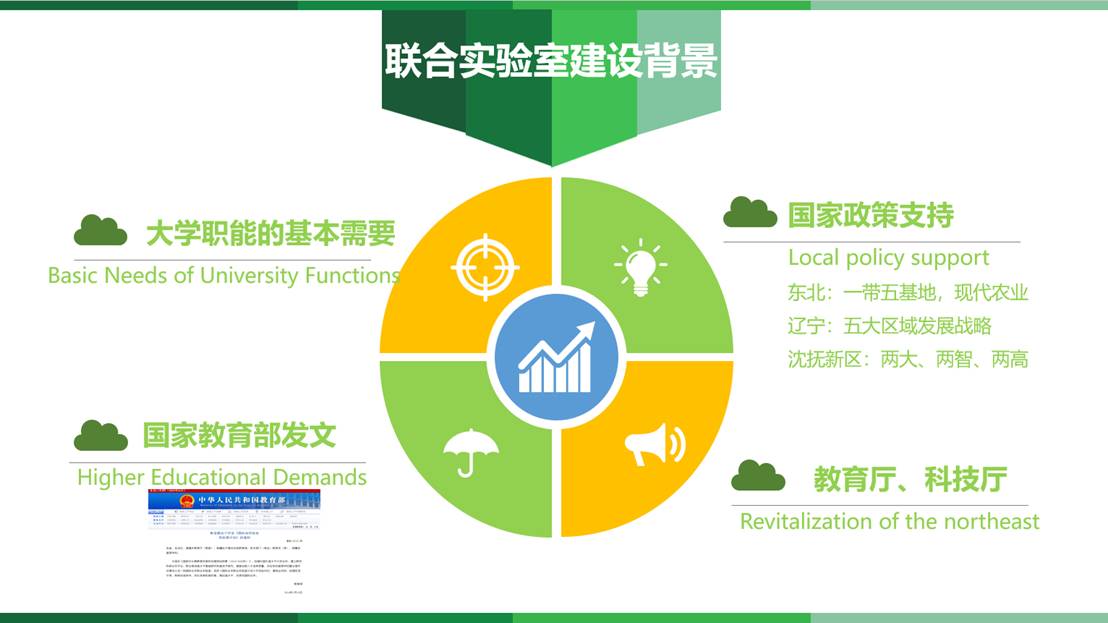
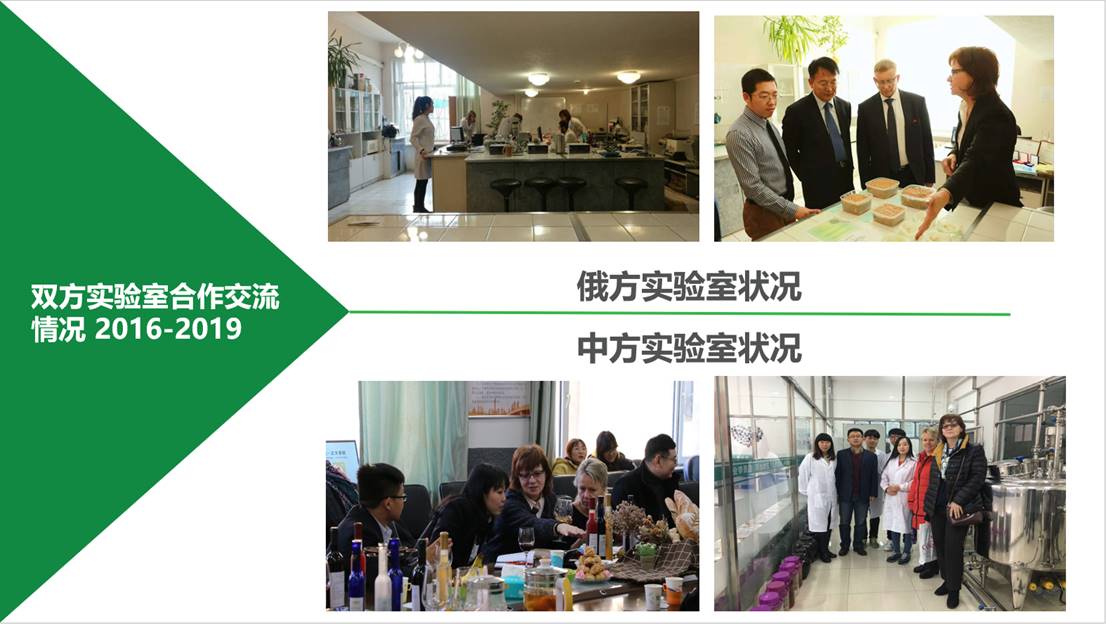
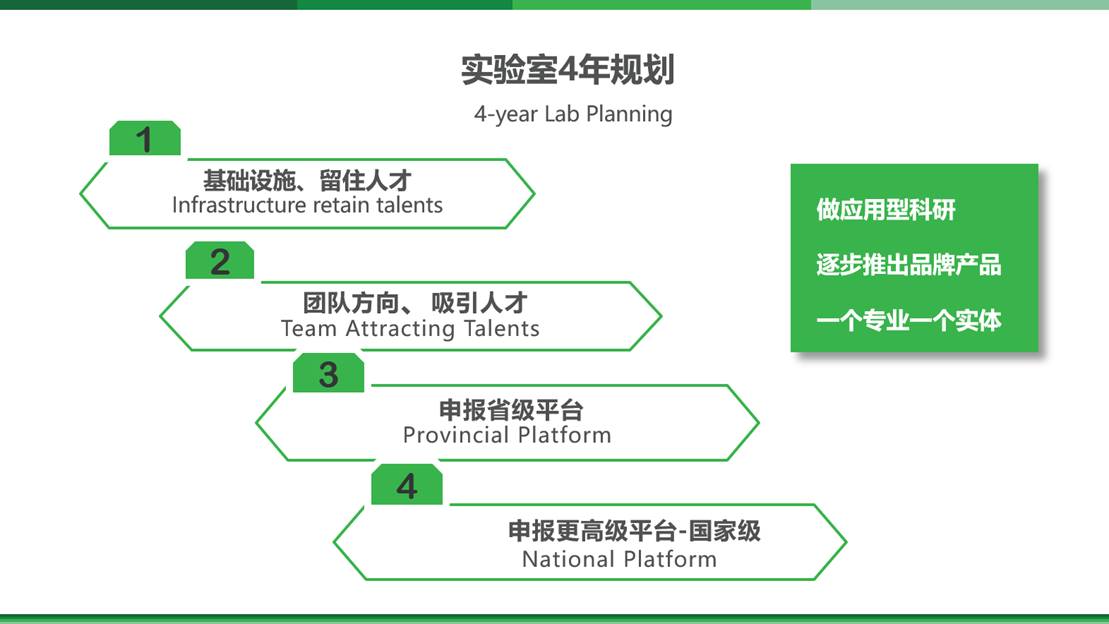
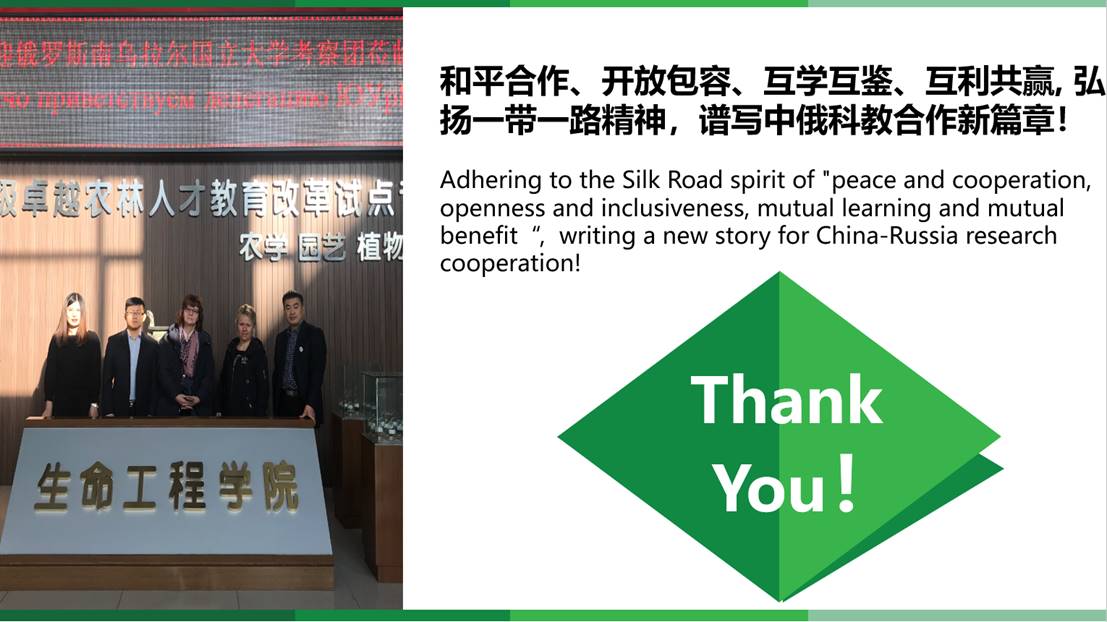
四、中俄食品生物技术国际联合实验室2019年工作报告
China-Russia Joint International Research Laboratory on Food Biotechnology
Work Reports 2019
November, 2019
1. Overview of the joint laboratory
Cooperation objective: China-Russian international joint laboratory of food biotechnology, which was jointly established by our university and the school of food and biomedicine of Russian state university of south ural in December 2018. In the next step, the two sides will make full use of their respective resource and technological advantages, take animal and plant resources and specialty foods as the research objects, and carry out cooperative research in the aspects of traditional food industry and deep processing process transformation of agricultural and sideline products with the help of food biotechnology.
Cooperation content: joint scientific research and joint education. The direction of joint research includes the removal of heavy metals and microorganisms from agricultural products in the field of food quality and safety. Mountain ice grapes, jujube kiwi fruit beverage processing technology; Study on the development of medicinal and edible products (ganoderma lucidum, ginseng, etc.) in mountainous areas. Joint education includes mutual recognition of undergraduate degree, exchange of students, admission to graduate school and teacher visiting.
Cooperation mode: the joint laboratory will set up two research sites in chelyabinsk, Russia and Fushun, China, respectively. To invest instruments and equipment, exchange personnel to participate in research topics, conduct academic exchanges and share intellectual property rights.
2. Further defining research areas in 2019
China and Russia have established a joint laboratory to give full play to their respective advantages in resources and technologies, take animal and plant resources and special foods of the two sides as research objects, and carry out cooperative research in traditional food industry and deep processing process transformation of agricultural and sideline products by means of food biotechnology.
Research area 1: mainly by means of biotechnology, give full play to the strengths of the laboratories of the two sides, conduct food development centering on Chinese animals, plants and other featured natural resources, and conduct research on the production and process improvement of Chinese food, beverage and wine.
Research area 2: mainly by means of biotechnology, supplemented by ultrasonic treatment and other physical and chemical technologies, the composition analysis and functional development are conducted around Russia's rich cold belt natural resources, animal and plant food, as well as the production and technological improvement of Russian specialty food, beverage and wine.
3. Overview of food biotechnology research team
At present, there are 15 full-time teachers in the professional group of food health engineering, among which there are as many as 10 teachers with doctor's degree, which has become the backbone of the development of the college.
4. Details of major equipment to be purchased by the china-russia joint laboratory
Table 1 Current research directions of PhD candidates
Name |
Research directions |
Name |
Research directions |
Wang-jiaqing |
Food and biotechnology |
Sunying |
Biological gene identification and analysis |
Wang-hongling |
Extraction and utilization of bioactive components |
Yanrong |
Identification and analysis of functional proteins |
Wangzhuo |
Biomedical development |
Xuebo |
Functional food development |
Mashuang |
Mechanism of fruit and vegetable coloring and quality improvement |
Hanzongyuan |
Functional food development |
Wangshanshan |
Food nutrition and metabolic mechanism |
Naguangning |
Fresh cut and preservation of plant-based food |
Details of major equipment purchased by the China-Russia joint laboratory |
NO. |
China-Russian joint lab |
Device name |
model |
Number |
The budget |
Instrument use |
1 |
China-Russian joint lab |
Rapid viscometer (RVA) |
TechMaster RVA |
1 |
430000 |
Viscosity measurement |
2 |
China-Russian joint lab |
Thermogravimetric analyzer |
TGA2 |
1 |
380000 |
Determination of heat |
3 |
China-Russian joint lab |
Differential scanning calorimeter |
DSC3 |
1 |
350000 |
Determination of heat |
4 |
China-Russian joint lab |
Fourier infrared spectrometer |
WQF-530 |
1 |
300000 |
Structure analysis |
5 |
China-Russian joint lab |
Atomic fluorescence spectrophotometer |
AFS-8220 |
1 |
100000 |
Composition analysis |
6 |
China-Russian joint lab |
Atomic absorption spectrophotometer |
WFX-220A |
1 |
150000 |
Elemental analysis |
7 |
China-Russian joint lab |
High speed refrigerated centrifuge |
H1850R |
1 |
100000 |
Product separation |
8 |
China-Russian joint lab |
Liquid chromatograph + mass spectrometry |
/ |
1 |
980000 |
Purification of analysi |
Estimated amount: RMB 2800000 YUAN |
5. Scientific research results of the joint laboratory
In 2019, 3 papers and 1 research project have been accumulated.
(1) Jiaqing Wang, Irina Yu. Potoroko, Lina A. Tsirulnichenko. Immune Characterization of C-Type Lectin-Like Protein in Rainbow Trout. Индустрия питания|. Food Industry. 2018. Vol. 3, No. 4. С. 88–96.
(2) Jiaqing Wang, Irina Yu. Potoroko*, Lina A. Tsirulnichenko, Hongling Wang. Effect of compound preservative of wood vinegar and chitosan oligosaccharide on cold fresh beef. (Unpublished)
(3) Jiaqing Wang, Hongling Wang, Irina Yu. Potoroko*, Lina A. Tsirulnichenko. Influences of Storage Conditions on Beef Texture. (Unpublished)
(4) Natural science foundation of liaoning province project: Study on the non-enzymatic browning mechanism of characteristic fruit juice in southern Liaoning.
6. Joint education
At present, two students from shenyang institute of technology have become graduate students of the national university of south urals through the joint laboratory.
Wang jiaqing, PhD, food and biotechnology, national university of south urals
Sun mingzhu, Master's degree, food and biotechnology, national university of south urals
7. Exchange of views in 2018-2019
The two labs conducted cooperation and exchange on fermented wine
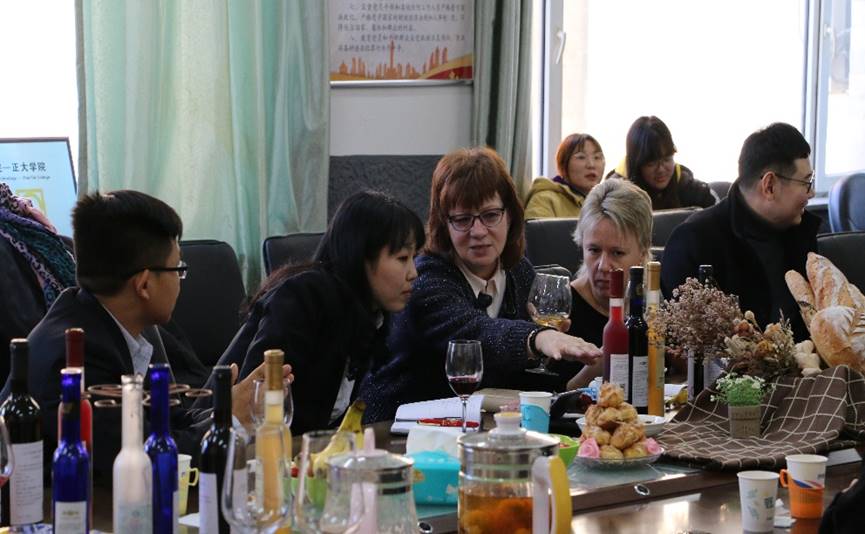
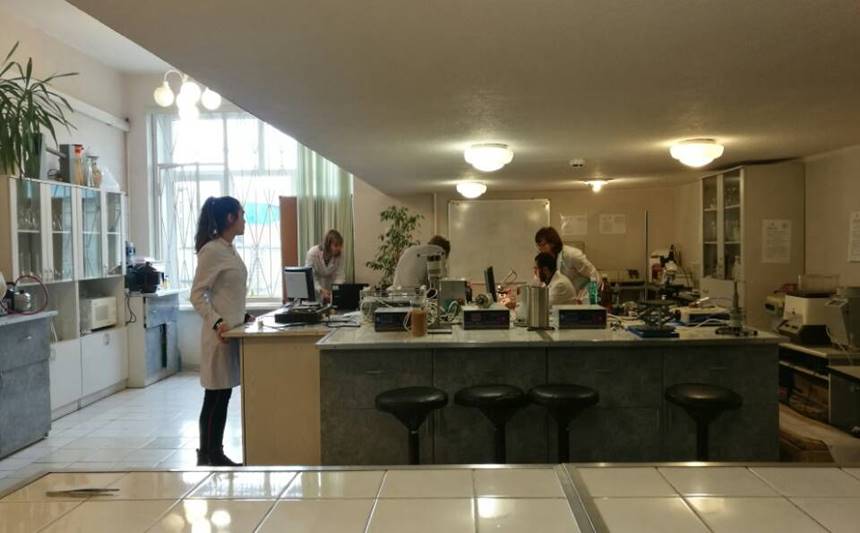
8. Plan to strengthen academic exchanges in 2020
Plan to invite 2 Russian professors to Shenyang institute of technology to give academic reports.
At last, adhering to the Silk Road spirit of “peace and cooperation, openness and inclusiveness, mutual learning and mutual benefit”, writing a new story for China-Russia research cooperation!
